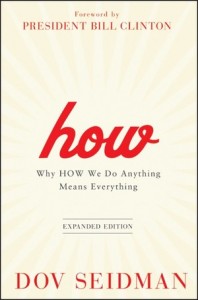Holocaust
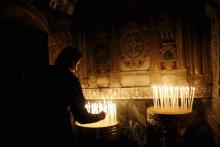
One hundred years ago — April 1915 — as World War I raged across Europe, the government of the Ottoman Empire attacked its Armenian citizens. Over the next several years, it is estimated that as many as 1.5 million Armenians died. Able-bodied men were murdered or enslaved as forced labor in the army, and hundreds of thousands of women, children, the infirm, and the elderly were marched into the Syrian desert to face death.
Supported by the Young Turks, an ultranationalist party that approved systematic deportation, abduction, torture, massacre, and the expropriation of Armenian wealth, the German-allied Ottoman government used the excuse of war to initiate the forcible removal of Armenians from Armenia and Anatolia where they had lived for centuries.
The targeting and mass murder of Armenians has been termed a genocide.
Although racial, ethnic, and religious wars have killed millions over the centuries, genocide is a unique byproduct of the 20th century. It requires both a rabid nationalism and the capacity of a central authority to organize and implement a sustained and systematic program of targeted mass destruction. Not until the 20th century had governments the necessary technologies, resources, and means to ally their historical ethnic, religious, or racist hatreds with radical nationalism to end the collective existence of a people.
The Armenian genocide was recognized and deplored around the world, even as modern Turkey resists the “genocide” label. American diplomats, Russians, Arabs, and German officers stationed in Ottoman lands witnessed the slaughter and alerted the wider world. In May 1915, Great Britain, France, and Russia vowed to hold the Turks personally responsible for their crimes. Relief efforts to save the “starving Armenians” were widespread.
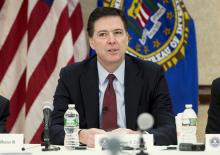
The director of the FBI stepped in it.
Or did he?
Last week, James B. Comey delivered a speech at the U.S. Holocaust Memorial Museum in which he said the murderers and accomplices of Germany, Poland, and Hungary “convinced themselves it was the right thing to do, the thing they had to do. That’s what people do. And that should truly frighten us.”
The Polish government was not happy. President Bronislaw Komorowski castigated Comey for his “ignorance, lack of historical knowledge, and possibly large personal aversion” toward Poles. And, as a gesture of goodwill, Comey has apologized.
Let’s be clear here. Comey was not accusing the nation of Poland of being complicit in the Holocaust. For all intents and purposes Poland as a nation temporarily ceased to exist during World War II.
But Poles, Hungarians, Germans, Lithuanians, Ukrainians, Croats, Estonians, Dutch, Latvians — who can deny that so many of them were willing conspirators with the Nazis in the roundup of Jews and the wholesale destruction of European Jewish life?
Here is how Komorowski could have responded:
“Poland suffered terribly during World War II. We were invaded by both the Soviet Union and Germany. The Nazis intended to turn our people into a permanent underclass of slaves. If you have read William Styron’s book Sophie’s Choice, or if you have seen the movie, then you know that the Nazis kidnapped Polish children and raised them as their own. Auschwitz was a killing field for the Poles, no less than for the Jews.
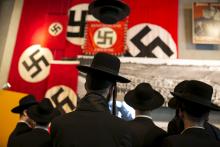
As Israelis mark Holocaust Memorial Day on April 15, a study by researchers at Bar-Ilan University has found that the adult children of Holocaust survivors are more fearful than their mainstream peers about the threat of Iran developing a nuclear weapon.
Given that many studies over the decades have found that children of Holocaust survivors are deeply affected by their parents’ traumatic experiences, Amit Shrira, the study’s author, set out to discover whether these second-generation survivors were more anxious over a potential Iranian bomb than others of their generation. His study was published in Psychological Trauma, a journal of the American Psychological Association.
Shrira compared the feelings of 63 children of Holocaust survivors whose parents lived under a Nazi or pro-Nazi regime to those of 43 children whose parents either fled to unoccupied countries or immigrated to Israel.
The study found that second-generation survivors “exhibit greater preoccupation with the Iranian nuclear threat” than the comparison group.
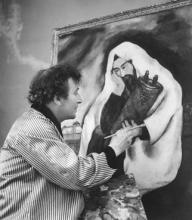
Novelist Chaim Potok captured the strain of transition from religious traditionalism to artistic expression in the fictional character Asher Lev. Asher, a young painter prodigy and son of a Hasidic luminary, is drawn to a Brooklyn museum where he surreptitiously views crucifixions and nudes. He then goes on to paint such scenes.
Asher’s mother tries to understand her son’s artistic longings, yet says in exasperation, “Your painting. It’s taken us to Jesus. And to the way they paint women. Painting is for goyim, Asher. Jews don’t draw and paint.”
Asher responds, “Chagall is a Jew,” but his mother cuts him off.
“Religious Jews, Asher. Torah Jews. Such Jews don’t draw and paint.”
Returning from a trip to Europe, Asher’s father sees the crucifixion drawings. In a rage, he asks his son if he knows “how much Jewish blood had been spilled because of that man?”
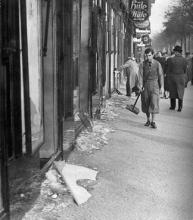
Demonstrating that a truly ill wind blows no good, The Wall Street Journal proved this week that Holocaust education programs deserve society’s continued support.
The evidence started with a letter to the editor from venture capitalist Tom Perkins under the headline “Progressive Kristallnacht Coming?” He wrote: “I would call attention to the parallels of fascist Nazi Germany to its war on its ‘one percent,’ namely its Jews, to the progressive war on the American one percent, namely the ‘rich.’”
A few days later, the editorial board of the Journal backed Perkins for what may have been the most-read letter to the editor in the paper’s history.

Venture capitalist Tom Perkins took a beating by his former employer for likening today’s class warfare to the Holocaust, with the mega-wealthy 1 percent as victims of “Nazi” repression.
In what The Wall Street Journal obediently termed a “Progressive Kristallnacht,” the grand old man of Silicon Valley said those who criticize wealth inequality are like Nazis pursuing “class demonization.”
The firm he founded, known as Kleiner Perkins, immediately disavowed the 82-year-old Perkins, saying, “We were shocked by his views expressed today in the WSJ and do not agree.”

Yoo-hoo! Sarah Silverman, Jon Stewart, Larry David! No matter how unreligious you comics may be, American Jews seem proud to claim you.
Well, mostly. You know the joke: Two Jews, three opinions…
But seriously: A sweeping new survey from the Pew Research Center, “Portrait of Jewish Americans,” finds humor is one of the main qualities that four in 10 of the nation’s 5.3 million religious and cultural Jews say is essential to their Jewish identity. The survey was released Tuesday.

The 18 beauty pageant finalists on stage at Haifa’s basketball stadium wear lovely gowns, their jewelry glitters, and their hair is thick with hairspray.
Unlike typical beauty contestants, the Israeli women standing before a crowd of 2,000 are ages 70 to 94. And all of them experienced the Holocaust.
CINEMA IS poetry, not prose, and so looking for “realism” in movies is an ambiguous task. Perhaps the better comparison would be with memory, for the way we experience the past might feel a little bit like a film unspooling in a low-lit room, the images urging themselves onto a wall with frayed paper, red-hued, with the sound fading as I get older. Like the opening of the film of Carl Sagan’s novel Contact in reverse, in which all the radio signals that have ever been broadcast speak their way into deep space, the further away I get from a memory, the more like an old movie it seems.
The role that cinema plays in memorializing the past is unparalleled—for both the way we experience memory and the memories themselves are uniquely bound up in each other—Casablanca or There’s Something About Mary alike may remind us of past loves, and perhaps also of the time and place we saw those movies, and watching either of them again enables us to re-experience the very emotions we may have first experienced by watching it. When we experience movies like memories, we meditate rather than consume, and do what Pascal suggested was the antidote to all the problems in the world: sitting still for 10 minutes and thinking. At the cinema we take a walk in our minds and, through an art form that is usually less controllable than reading or listening, we are taken somewhere new.

Thailand’s most prestigious university apologized to the Simon Wiesenthal Center on Monday for allowing its campus to hang a huge, hand-painted “Congratulations” banner illustrated with Captain America, Batman, and other comic superheroes, topped by Adolf Hitler giving a Nazi victory salute.
The apology came three days after the Simon Wiesenthal Center published on its website a photograph of a female student in a university graduation gown posing in front of the larger-than-life banner with her arm outstretched in a Sieg Heil salute.
“Hitler as a superhero?” asked Rabbi Abraham Cooper, Simon Wiesenthal Center’s associate dean, in a statement posted on July 12.

WASHINGTON — The adult survivors of the Holocaust are mostly gone now, and those who survived as children — and were old enough at the time to remember their ordeals — are now in their 70s and 80s.
It won’t be long before no eyewitnesses remain.
That’s why, as the U.S. Holocaust Memorial Museum marks its 20th anniversary today (April 29) with more than 750 survivors, museum officials are calling it one the last large gatherings of those who managed to escape Hitler’s death machine.
For those who have dedicated themselves to teaching future generations about the Holocaust and its victims, the demise of the survivors means looking backward in a different way — a way that no longer includes people looking others straight in the face and recounting what they saw and what they lived.
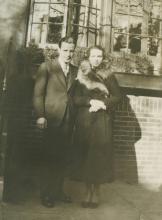
Gilbert and Eleanor Kraus lived a comfortable life in 1930s Philadelphia, where he made a good living as a lawyer, and she kept a stylish house.
They were secular Jews who sent their children to a Quaker school, and unlikely candidates for the mission they assigned themselves. Gilbert revealed the plan to his wife as he was shaving in the bathroom, so their young son and daughter would not hear.
He wanted to go to Vienna and save 50 Jewish children from the Nazis.
When and how one may draw general conclusions from particular evidence is a frequently debated question. One example is museums – do historical museums exist to preserve the evidence and artifacts of a particular experience, or should they attempt to draw generalized lessons from that experience? A thoughtful piece by Edward Rothstein in the New York Times examines how Holocaust museums in Israel are being retooled to educate on what are seen as the “universal lessons.”
Rothstein takes issue, arguing that this
“leaves Holocaust museums intellectually orphaned. What “lessons” are we supposed to take away? The impulse has been to generalize, to say that a Holocaust museum can’t be “just” about the murder of Jews during World War II.
“Why? Is there a problem, say, with an American slavery museum being “just” about American slavery? Why should Holocaust museums deal with notions of tolerance or racism in general, or even genocide in general? Why do we think that the proper lesson comes from generalizing rather than comprehending the particular? The moment we generalize, we strip away details: we lose information and create equivalences that may be fallacious.”
I’m inclined to agree. Some events in history deserve to be remembered and pondered in their own right, not simply as things from which to draw general lessons.

The news that Israel’s memorial to Holocaust victims had been grafittied in early June with bitterly anti-Semitic and anti-Israel statements was shocking.
More shocking still was the news that the three men arrested for the crime are Jewish.
How could Jews desecrate the memories of millions of fellow Jews who perished at the hands of the Nazis?
The religious identities of the culprits -- however surprising to many who read of their arrests last Tuesday (June 26) -- did not surprise many Israelis, however. They know that a number of ultra-Orthodox Jews, for religious reasons, believe the State of Israel should not yet exist.
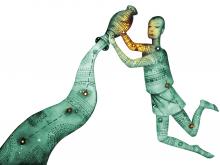
 This past spring break, I took my 14-year old daughter to the Illinois Holocaust Museum and Education Center.
This past spring break, I took my 14-year old daughter to the Illinois Holocaust Museum and Education Center.
My daughter has had a difficult middle school experience, especially these last two years. This last year, we have both, in describing it, used the word “hell.”
We have been frequently at odds in these months, my daughter and me. I often feel that I have failed her, that I have failed myself.
One point of connection has been her explorations around World War II and the Holocaust. She has read books about it — novels, mostly. We have watched movies that, in my naiveté, I didn’t imagine she would watch for a while. There have been questions, discussions, recollections of stories her grandfather, a WWII vet who is now deceased, once shared with her, with me. There have been nightmares, too, where I wonder if we are, yet again, making the best choices in our twisting, turning journey through this year, this path.
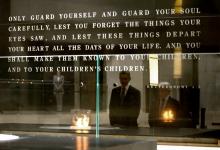
President Barack Obama on Monday vowed to crack down on Iran and Syria and promised to "never again" allow atrocities like those seen during the Holocaust. Speaking from the U.S. Holocaust Memorial Museum, Obama first toured the facility with Holocaust survivor and Elie Weisel.
Following is the transcript from Obama's remarks.
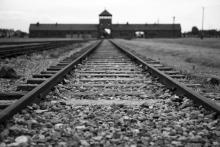
One Holocast survivor dies in Israel every hour, according to the Foundation for the Benefit of Holocaust Survivors in Israel, a nonprofit group based in Tel Aviv that helps care for needy survivors. Today, there are 198,000 survivors in Israel; 88% are 75 or older.
Israel's Yad Vashem memorial contains the largest archive in the world of historic material related to the Holocaust — or Shoah, as it is known in Hebrew — and it has been intensifying its campaign to record the accounts of survivors. Teams of historians have been dispatched to interview elderly survivors in their homes and collect artifacts.
"We are really racing against the clock to find every survivor and get their stories told before they die," said Cynthia Wroclawski, manager of the Shoah Names Recovery Project.
Today is the anniversary of the Warsaw Ghetto uprising in 1943, and the day designated as Holocaust Remembrance Day. Ari Shavit, senior correspondent and editorial board member of Haaretz newspaper has some important reflections on how that remembrance is used and misused.
We are being torn between those who mention Auschwitz so that Israel will be deemed innocent in every situation, and those who distance themselves from Auschwitz so that Israel will always be guilty. As a nation, we have lost the ability to experience the Holocaust both as a universal event with humanitarian significance and as a unique event with Jewish and Israeli significance. …
It is our duty not to speak harshly and not to exploit it. The Holocaust was a terrifying event of insanity. The true imperative to be derived from the Holocaust is the imperative of sanity. Not to be enslaved to the past but also not to be alienated from it. To observe death, and to remember death - and to choose life.
In a world that seems dominated by death – from Afghanistan, Iraq and Syria; to South Sudan and the Congo; this day should allow us to reflect on the 6 million Jews who died in Europe and to redouble our efforts to work for life for the millions dying or threatened with death today.
Duane Shank is Senior Policy Advisor at Sojourners. You can follow him on Twitter @DShankDC.
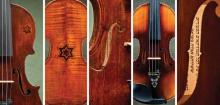
CHARLOTTE, N.C. -- Another voice from the past is telling the stories of the Holocaust.
Violins that outlived the owners who played them in the death camps and Jewish ghettos are being brought back to life by Amnon Weinstein in his shop in Tel Aviv. As Yom Hashoah (Holocaust Remembrance) gatherings occur around the world in April, 18 violins tracked down and repaired by Weinstein will be unveiled in Charlotte, N.C.
A dozen public concerts, worship services and other programs throughout the month are expected to attract thousands who are drawn to the music, and the history behind each instrument -- the first time the violins will be shared with the public in North and South America.
Weinstein hopes he can bring the violins to other communities, in a bid to recall the 6 million Jews and 5 million others who perished at Hitler's hand.
